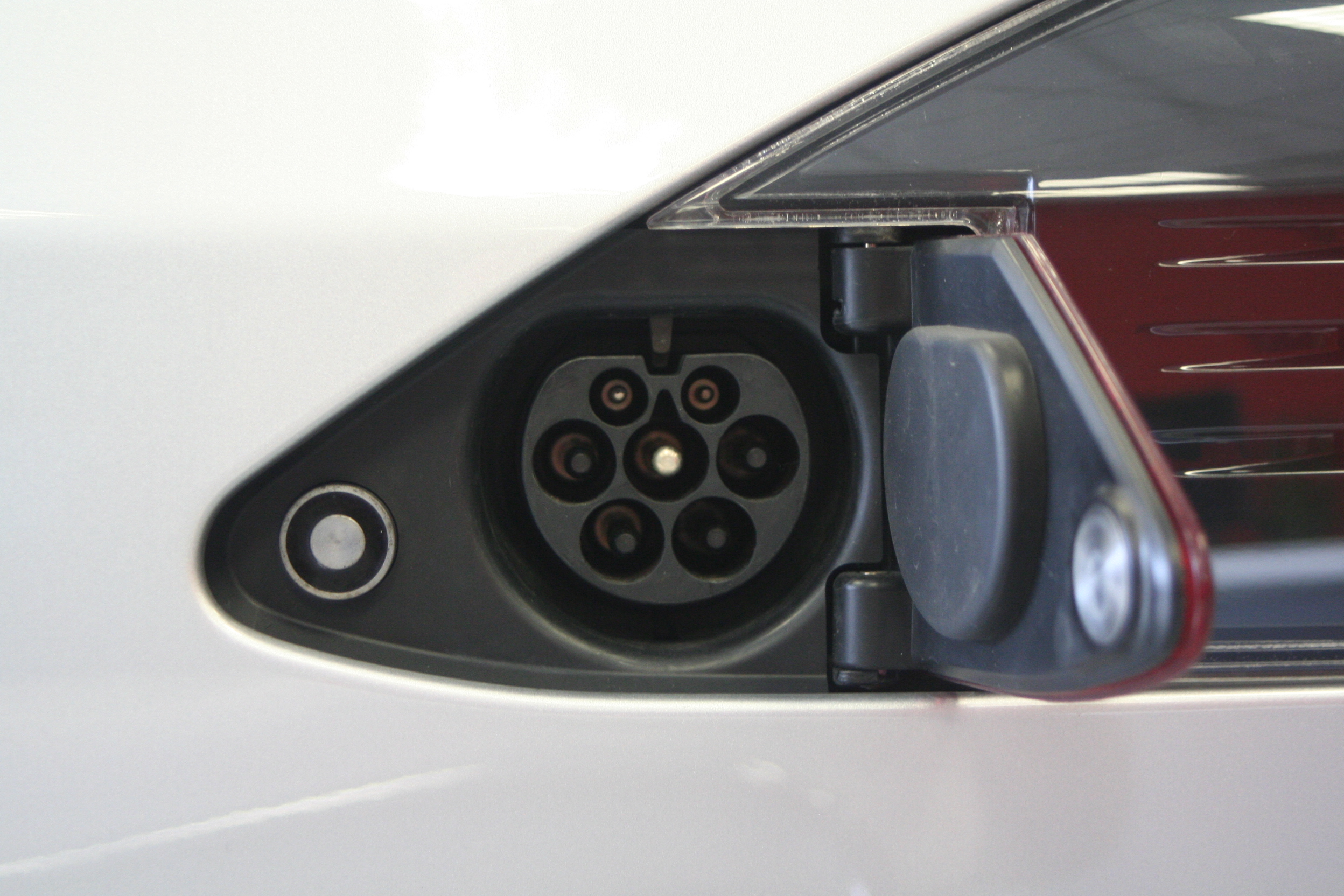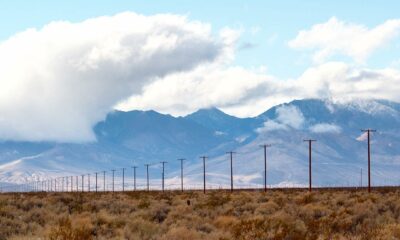Guest Columns
Demand Power Charges Are the Achilles Heel of a Nationwide EV Fast Charging Network

The road to widescale electric vehicle adoption faces many challenges….and not limited to vehicle affordability and concerns of an inadequate charging infrastructure. In this article, I will explore another barrier that is infrequently discussed….the challenge of achieving public fast charger (DCFC) profitability.
Why demand power charges increase the price EV chargers must pay
A reliable and convenient network of public fast electric vehicle chargers is a prerequisite to achieve the Biden administration’s greenhouse gas regulations that require nearly 72% of U.S. light duty new vehicle sales be fully electric (BEV) or partial plug-in electric (PHEV), by 2032. The vast majority of EV owners now charge at home. But this is likely to change with greater EV adoption since many live in a condo, an apartment, or have street parking. Home charging is simply not a possibility. Many older homes lack sufficient amperage in its electrical service, often requiring thousands of dollars of upgrade besides the cost of a level II charger.
Factors that impact DCFC profitability include low utilization percentages (due to the high percentage of home charging and that EVs represent less than 1% of the total US vehicle fleet)….and also high operating costs from demand power charges. Demand power is typically the highest electricity usage during a 15 minute period in a billing cycle and utilities charge a premium for it. By measuring spikes in power demand and charging a higher fee to supply it, a utility is better prepared to deliver electricity under all power demand scenarios and be able to afford to invest in the infrastructure to do so. The cost of demand power at my office location is $3.41 per kW….which is 22 times more than the overall cost of electricity.
Exceeding monthly electricity allowance
Many utility companies specify the maximum power demand a customer is allowed per month. Exceeding that maximum power demand over consecutive months often results in the customer being moved to a tariff with a higher demand charge. Energy experts have told us that this has lead to power bill increases from $100,000 to $200,000 annually for some auto dealerships, due spikes in power demand caused by their use of EV fast chargers.
There is an interesting article written by the Great Plains Institute entitled “Analysis: How Demand Charges Impact Electric Vehicle Fast Charging Infrastructure.” It studies how frequently a DCFC station must be used by customers, and how much they need to pay for a station to break even each year. Generally they “found that it is less costly to operate a single 50 kW charger, and some of these chargers can break even with as little as two or five charging customers per day depending on the rate charged by the electric utility. However, in most other cases, it is very difficult for a DCFC station to break even due to demand charges.”
For 150 kW chargers, a DCFC will break even for about half of the utility rates studied. For capacity beyond 150 kW makes it nearly impossible for the operator to break even “except in cases where the utility does not have a demand charge.”
Breaking even is not the same as making money
Note that “breaking even” and making a profit, are two different things. So what is the real world impact on the profitability of DCFC where there are expensive demand charges? Demand power charges very across the country and can significantly increase the cost to operate a DCFC.
Let’s examine a hypothetical for a public EV charging station in Colorado where the median of all utility maximum demand power charge averages $16.65 per kW. This charging station has ten charging bays and we can assume all ten bays would be used simultaneously at least once in the billing cycle. The chargers all have a capacity of 150kW+ and each of the ten EVs being charged are each consuming an average of 125kW. The cost for demand power for the 15 minute spike in power demand would be $20,812.25, payable to the utility by the charging station owner (1,250kW x $16.65= $20,812.50).
If the everyday cost of energy to charge at this station was 50 cents per kWh, the revenue collected for this same 15 minutes would only be only $156.25, or $20,656.25 less. For this station to be profitable, the high cost of demand power would have to be recovered from the other charges sold during the month. A survey of U.S. demand power charges can be found here.
Demand power charges – the impact
There are a significant number of other studies about the impact of demand power charges on DCFC profitability. The Transportation Energy Institute’s Electric Vehicle Council writes “Demand charges represent a significant impediment to the deployment of EV chargers in the U.S.” By reviewing market conditions, existing rates, current and potential mitigation strategies and data from existing charging stations, E Source categorized the most viable options into four categories:
- Reduce or eliminate demand charges for direct current fast chargers (DCFC).
- Cap the total per-kWh monthly energy cost for low-use stations.
- Install co-located batteries to help manage peak demand.
- Manage EV charging during peak periods.
Eliminating demand charges can decrease operational costs for DCFC by as much as 85%. Charging volume does not impact the cost of demand charges. Lowest utilization will still see maximum demand charges (Great Plains Institute).
Eliminating these charges will present its own problems
Reducing or eliminating demand charges for DCFC is contrary to t the very reason these charges exist. Demand charges are essential fees that enable a utility to recover the cost of maintaining, upgrading and building the electric grid in proportion to a customer’s grid impact. For electric customers that use high amounts of power, such as locations that host fast charging stations, demand charges are designed to ensure that each customer is paying their fair share to deliver power safely and reliably to all customers. The electric grid is not equipped to meet the projected demand for EV charging at the scale and pace needed to meet decarbonization goals.
Reducing or eliminating demand charges is also a matter of equity since the forgone revenue will have to be collected elsewhere so that a utility can still operate and maintain the grid. Waiving demand charges for fast chargers will shift costs to all ratepayers, including non-EV drivers. In Massachusetts, for example, demand charge relief is projected to result in forgone utility revenue of $84 to $131 million. This will be recouped from other ratepayers via increased power rates.
E Source determined the only strategy to be 100% effective at mitigating demand charges for the EV charging site host is to eliminate demand charges from the rate tariff. But this strategy is not without consequences for other stakeholders, most notably the utility and potentially other rate payers.
A public utility had to abandon its plan
In Maryland, the People’s Council was established by the General Assembly in 1924 and is the oldest utility consumer advocacy office in the nation. They advocated for consumers in proceedings that affect cost, reliability, and quality of public utilities service.
With a goal of ensuring that Maryland’s electric grid is customer-centered, affordable, reliable and environmentally sustainable, the Public Service Commission initiated a proceeding, titled Public Conference 44 (PC44) to launch a targeted review of electric distribution systems in Maryland.
The Maryland People’s Council’s PC 44 Electric Vehicle Work program had three specific objectives : (1) to address barriers to deployment of EVs, (2) to increase the efficiency and reliability of the electric distribution system, and (3) to lower electricity use at times of high demand. After spending $51 million installing EV chargers, the program was put on hold. Based on costs and revenues of the programs incurred to-date and holding 2023 utilization and revenues constant, it was determined that the programs will take about 66 years to break even.
There goes the ballgame
The challenges for achieving DCFC profitability might be one reason this country’s largest EV manufacturer fired their entire 500 member charging team. Perhaps it was discovered that this division was an important drain on profitability, and why Wall Street does not appear to recognize its robust charging system as an important source of future profitability.
The cost to construct, operate, and maintain a DCFC station is significantly higher than for a gasoline station. If DCFC stations cannot be operated profitably, what does it mean for the viability of the transition to an electric vehicle world that many are aspiring for?
This article was originally published by RealClearEnergy and made available via RealClearWire.
Geoffrey Pohanka is Chairman, Pohanka Automotive Group, (p.s. he currently owns two EVs and they are his daily ride).
-

 Civilization3 days ago
Civilization3 days agoDC Pipe Bomb Arrest Raises Questions About Christopher’s Wray’s FBI
-

 Civilization4 days ago
Civilization4 days agoThe Legal Logic Behind U.S. Operations Against Narco-Terrorist Networks
-

 Executive4 days ago
Executive4 days agoNewsom’s ‘National Model’ for Homeless Wracked by Fraud
-

 Executive3 days ago
Executive3 days agoWhen You’re in a Hole, Stop Digging
-

 Education3 days ago
Education3 days agoWaste of the Day: Taxpayers Subsidize Football Coach Severance
-

 Executive2 days ago
Executive2 days agoWaste of the Day: Obamacare Failed Test, Approved Fraudulent Subsidies
-

 Civilization2 days ago
Civilization2 days agoPence Calls on Trump To Fire RFK Jr Over Abortion Drug
-

 Executive4 days ago
Executive4 days agoWaste of the Day: Feds Pay Nonprofits That Sue the Government













